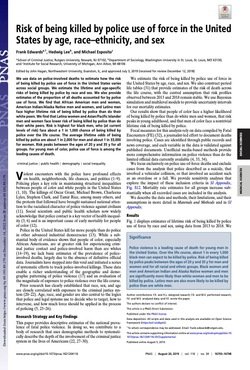Edited by Ronald V. Clarke
Situational prevention originated in Great Britain, but its development was soon influenced by policy research in the United States. Research over the last 10 years has demonstrated the usefulness of situational prevention in dealing with a broad range of crime problems. Situational prevention requires design or modification of the immediate environment to reduce opportunities for crime by increasing the efforts and risks and decreasing the rewards as perceived by a wide range of offenders. Its 12 techniques include target hardening, access control, deflecting offenders, control of factors that facilitate crime, entry and exit screening, formal surveillance, surveillance by employees, natural surveillance, target removal, property identification, removal of inducements, and rule setting. Many of these measures are unobtrusive, others actually reduce fear of crime, and others increase convenience while increasing security. The case studies describe the use and outcomes of situational prevention focused on specific crimes in the United States, England, Australia, Canada, Sweden, and the Netherlands.
NY. Harrow and Heston. 1992. 289p.



